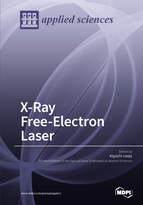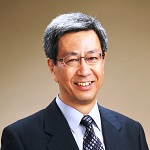X-Ray Free-Electron Laser
A special issue of Applied Sciences (ISSN 2076-3417). This special issue belongs to the section "Optics and Lasers".
Deadline for manuscript submissions: closed (31 March 2017) | Viewed by 199834
Special Issue Editor
Interests: electron dynamics; molecular dynamics; atoms, molecules and clusters; ultrafast phenomena; photoionization; molecular imaging; electron spectroscopy; many particle spectroscopy; coherent control; free electron lasers
Special Issues, Collections and Topics in MDPI journals
Special Issue Information
Dear Colleagues,
During the last decade, the advent of the x-ray free electron lasers (XFELs) has opened a new research avenue for investigations of ultrafast electron and structure dynamics in any form of matter. XFELs deliver coherent x-ray pulses, combining unprecedented power densities up to 1020 W/cm2 and extremely short pulse durations down to a few femtoseconds, offering important advantages over conventional x-ray sources for many applications. Time-resolved spectroscopic and structure studies on the timescale of femtoseconds allow us to probe electrons and atoms in action. Indeed, XFELs have been applied to study ultrafast charge transfer in a molecule and a molecular complex, chemical bond breaking and formation, and phase transitions in solids. The intense coherent XFEL pulse focused down to 1 mm2 makes single-shot diffraction imaging of non-crystalized biomolecules and nano-size objects reality. On the other hand, since the XFEL pulses are entering a new regime of x-ray intensities, they are opening a new research field of studying interaction between intense x-ray pulses and various forms of matters. The extremely intense x-ray pulse strips off so many electrons from an isolated atom, leads to a violent Coulomb explosion of an isolated molecule, and transforms a solid target into extremely dense plasma. Furthermore, rapidly developing XFEL technologies make, not only fully coherent x-ray pulses available routinely, but also pulse shaping and phase-controlling of multicolor pulses reality, opening another novel research area of x-ray non-linear spectroscopy and attosecond coherent control.
The Special Issue of the journal Applied Sciences, “X-ray free electron lasers”, aims to cover recent advances in the development of XFELs and in the applications of XFELs in the field of physics, chemistry, and biology, as well as relevant theoretical studies in the fields.
Prof. Dr. Kiyoshi Ueda
Guest Editor
Manuscript Submission Information
Manuscripts should be submitted online at www.mdpi.com by registering and logging in to this website. Once you are registered, click here to go to the submission form. Manuscripts can be submitted until the deadline. All submissions that pass pre-check are peer-reviewed. Accepted papers will be published continuously in the journal (as soon as accepted) and will be listed together on the special issue website. Research articles, review articles as well as short communications are invited. For planned papers, a title and short abstract (about 100 words) can be sent to the Editorial Office for announcement on this website.
Submitted manuscripts should not have been published previously, nor be under consideration for publication elsewhere (except conference proceedings papers). All manuscripts are thoroughly refereed through a single-blind peer-review process. A guide for authors and other relevant information for submission of manuscripts is available on the Instructions for Authors page. Applied Sciences is an international peer-reviewed open access semimonthly journal published by MDPI.
Please visit the Instructions for Authors page before submitting a manuscript. The Article Processing Charge (APC) for publication in this open access journal is 2400 CHF (Swiss Francs). Submitted papers should be well formatted and use good English. Authors may use MDPI's English editing service prior to publication or during author revisions.






